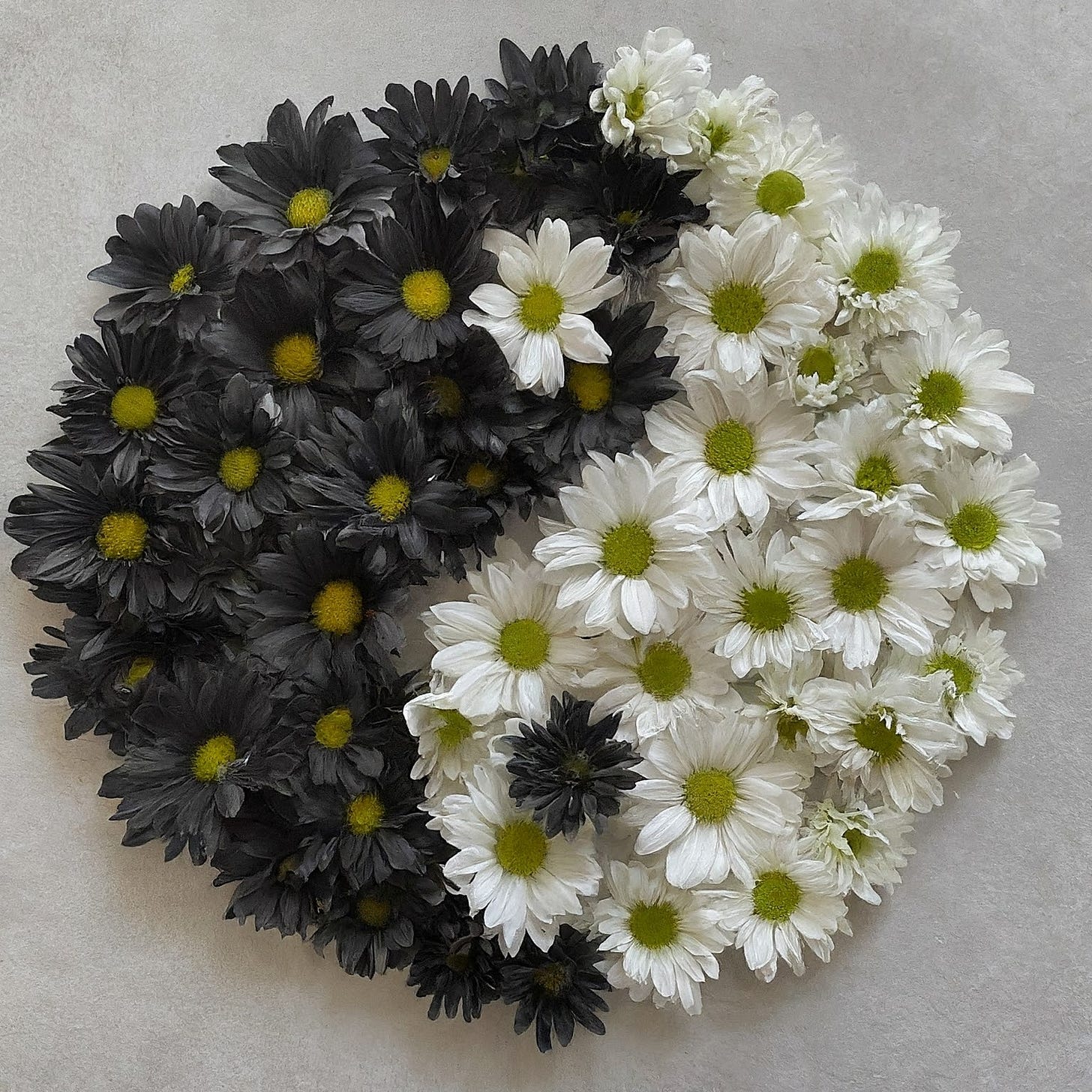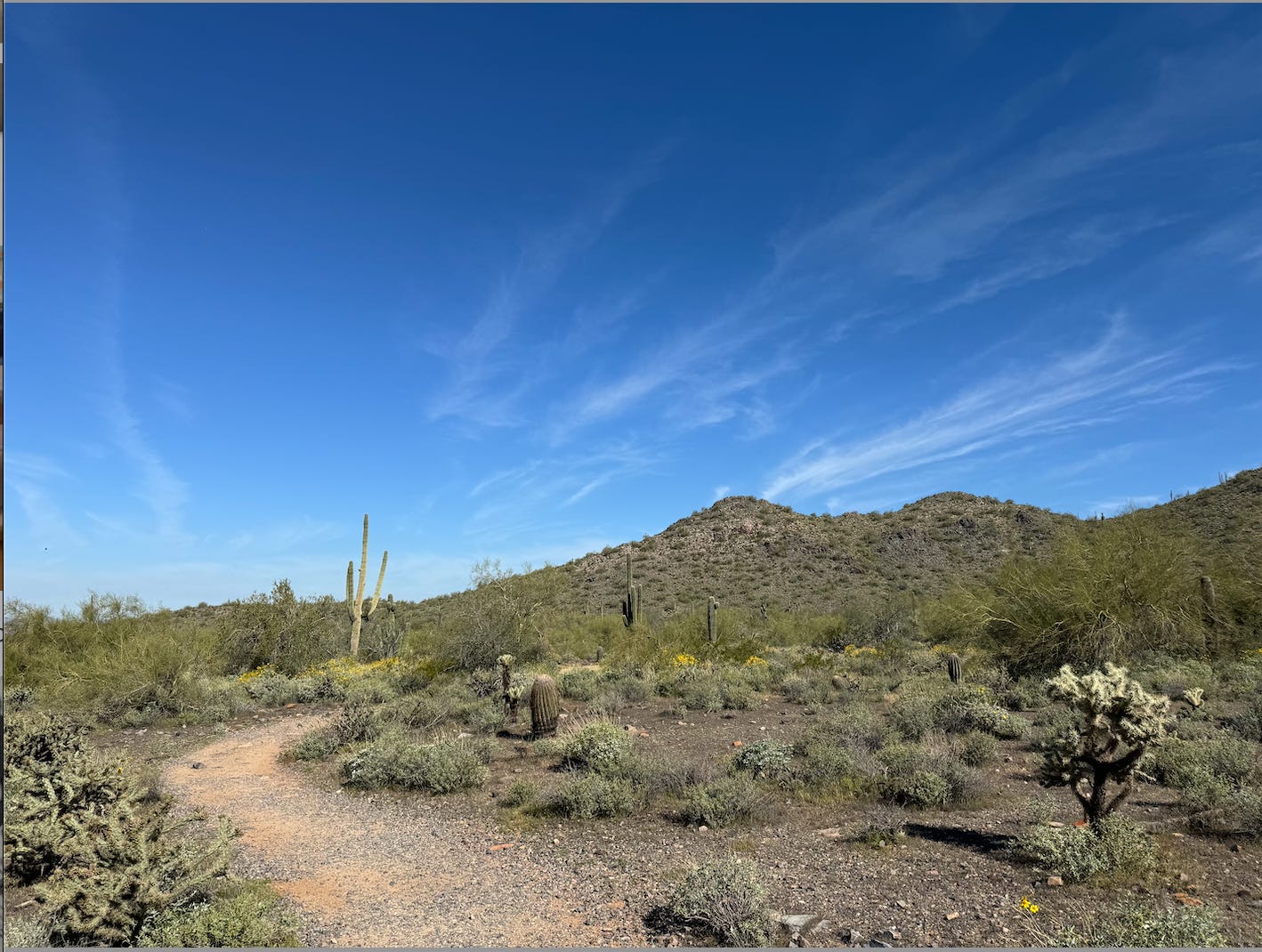“Daddy, are you doing Qi Gong?” my son asks me as I take a quick break to stare off into a beautiful ocean view. I stand with knees slightly bent, hands in mudra, and take a few deep breaths of ocean air deep into my belly.
As peace descends I mutter to myself that “I need to tell more people about Qi Gong!” At some level this is ridiculous since these techniques go back thousands of years and are done widely across China by many hundreds of millions of people… and yet, whenever I practice Qi Gong most people stare at me like I’m crazy. While one can find a yoga studio in almost any town in California, Qi Gong hasn’t made the same cultural jump.1
What is Qi Gong? Why do I do it? Who cares?
There is a lot I want to share about Qi Gong but I think much of it is too confusing to explain without some direct experience - there can be lots of new terms and I’m not sure it will be too helpful. So instead, let me explain what Qi Gong is at a very high level and then share some links to learn more.
“QI” WHAT?
氣 Qi (pronounced “chi”) means energy or “life energy"
功 Gong means to work or cultivate
Qi Gong = Energy Work or The Way of Energy.
Have you ever seen older Chinese people doing various poses in a park in the morning? What they’re doing is some version of Qi Gong (Tai Chi being a branch within this broader area of study).
As defined in “Qi Gong and the Tai Chi Axis” by Mimi Kuo-Deemer:
Qigong is a form of energy cultivation… It is considered one of the pillars of Chinese medicine, but also the basis of most Chinese martial arts, which draws its principles from Daoism and Buddhism. In both Daoism and some forms of Buddhism, qigong remains the primary means of moving and exercising the body, regulating the breath and calming the mind and/or heart on the path to spiritual awakening. It is therefore a practice that can, at once, be medicinal, martial and spiritual.
Tactically for me, Qi Gong is a series of postures and meditation techniques that I do every morning and sometimes later in the day. When I come out of doing the Qi Gong postures, I can feel my body pulsing with a deeply grounded energy and mindfulness. I’m reminded of a drawing I saw once of a meditator with a thought bubble above him that says, “Is this shit legal?” My friend Matt likes to say that Qi Gong is the closest he’s ever seen to magic.
While yoga also has grounding qualities and connects body-breath-mind, I find Qi Gong postures to be much more directly centering. I think Qi Gong is actually closer to what people think Yoga (the exercise) actually is going to be: a series of poses that help you feel grounded and connected to a deeper source of peace.2
Another amazing advantage of Qi Gong is that you can do it in very old age. The postures are powerful but not too strenuous on the body which means they scale up and down by age and physical ability. For example, I hurt my knee some months ago but I could still do all of my Qi Gong practices every day.
And finally, I love that Qi Gong benefits from being done in nature. In fact, going outside to somewhere peaceful is encouraged since you benefit from the energy of nature around you. Whereas yoga poses are often harder to do outside, Qi Gong practices can easily be done anywhere - a sandy beach, staring at a beautiful view on a hike, in an airplane, you name it…
WHAT IS THIS “ENERGY” YOU SPEAK OF?
Whenever I talk about “energy” I hear a little voice in the back of my head say “that’s woo woo nonsense! Energy schmenergy.” And yet, with Qi Gong I can feel it directly in my body every single day - I am not an expert on the science nor medicine around it, but experientially through these practices I can feel energy directly running through my body and how it interacts with the world around me.
Mimi Kuo-Deemer (the main teacher I have been using as my guide) talks about “energy” in one of her introductory sessions. I’m including much of it below since I think this discussion of “energy” is actually one of the biggest blockers to people doing Qi Gong. “Energy” is something that we feel uncomfortable talking about in the West since it seems counter to science, but as Mimi explains, I think there’s a way to bridge this gap:
(quote edited for for readability)
“Energy can sometimes be understood as this woo-woo thing. I was talking to a concert violinist about Qi Gong and they said, “What do you mean energy? I don’t believe in ‘energy.’”
But she goes onto explain that energy is at a fundamental level how the universe works:
“The first law of thermodynamics says no energy can be created or destroyed: there’s chemical, there’s nuclear, there’s geothermal, kinetic energy, sonic energy, radiant energy. All of these move and as they’re moving they’re still something.
And energy for us in our body is the foundational level of how we survive and there’s a movement of that in the survival that we need for basic sustenance. Food is chemical energy. And our cells and circulation get the chemical energy and make it ATP - the energy of life… Plants take solar energy and photosynthesis. Animals eat things for that sustenance. So energy is not some esoteric thing, it’s really the bedrock.
[...] In the Daoist view, everything in the universe is known as energy - known as Jin or life force. And this sense for how we can affect and shape our energy is what I find Qi Gong is so beneficial for. When energy is moving into our bodies it can move and transfer around our body in ways that are balanced but are often imbalanced [...] Qigong is really a practice that helps us clear some of the passageways and support the way in which the energy can move through the body in a more efficient and balanced way. By balance I mean just less stress factors affecting the experience.
One of the things I love about QiGong is that it draws a lot of the evidence for and experiences of embodiment from nature [and the ancient Chinese sages]. [The sages] saw all of life is energy and we are part of the natural world. And if we’re affected by the same amount of daylight in the season as plants are, or as animals are, then everything in our body, all of our bodily functions [...] as well as our functions, emotions and thoughts are all Chi – all vital energy. Either rarified or dense - Yin or Yang - but this energy is also awareness. This is mind. This is heart. And this energy pervades our entire body and how this flows in our body can really impact our overall health, our organism, which include how we are emotionally and mentally. And when we can really look at nature for how our energy is experienced, nature becomes our greatest teacher.”
I recognize all this discussion of energy might be off-putting or sound far-fetched, and yet, I experience it daily through Qi Gong practices as a concrete, physical phenomenon - it’s not just philosophy but realized practice.
WHERE TO START?
I could continue this post with more details but I’m afraid I’d lose your attention in the process. So instead, here are a few pointers in case you want to learn more.
Unlike Yoga which has a pretty standard set of postures that most classes offer (e.g., sun salutations, chair pose, etc), Qi Gong is extremely decentralized. There are tons of schools and some say 7000+ poses… this makes it really tricky to know where to start.
My recommendation is:
Choose one of the following series of postures from Mimi Kuo-Deemer: I do the 8 Brocades series every morning, and there is also the 5 Elements series (which I find a bit more challenging).
Choose one of these, do it a few times with the video and then, repeat it in the mornings without the video once you’re comfortable with it. After you do it for a while compare how you feel later in the day when you do the poses vs. when you don’t.
If as you’re learning you want to learn more, Mimi has some focused multi-hour courses on each series that you can find on her website.
Note: It’s important that you breathe from your abdomen while doing Qi Gong - your navel has a key energy center called the lower Dan Tian - breathing from here is key.
In addition to one of these series, I highly recommend starting with a few minutes or more of Zhan Zhuang (aka Standing meditation). It’s one of the most powerful practices I’ve ever found. Even five minutes a day is super centering. Here is a youtube video covering the technique and here is a book that goes into it in much more depth.
Once you do this, if you’re curious to learn more, there are tons of resources online and I’d also be happy to share with you more of what I’ve learned. Feel free to leave me a note or reply to this email.
Also, if you do Qi Gong already, please let me know by replying. I’d love to learn from you.
Until next time 🙏🏼
Why is Yoga much more common than Qi Gong in the United States? My best guess is that yoga made the jump over in the late 60s with the Hippie movement but during this time period China was in the middle of the Cultural Revolution which actively destroyed a lot of the ancient Chinese heritage and was not friendly to tourism. At no point thereafter was there enough cultural momentum to overcome this initial divergence… that’s my guess anyway.
I mention “Yoga the exercise” since I know “Yoga the system” often includes things that are more like Qi Gong. Also, to be clear, this isn’t to hate on yoga - I love yoga but the impact after 30” of each is quite different in my experience.






In an airplane?
Thank you for sharing your experience with Qi gong and the references you have provided. I don’t have any experience with Qi gong. However, I intuitively know that there is something very powerful about slow movements.